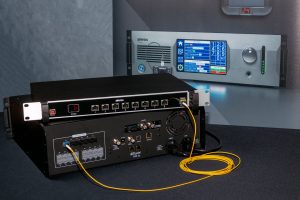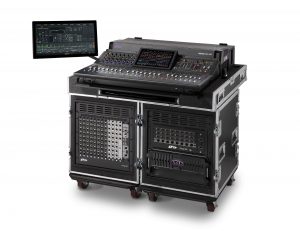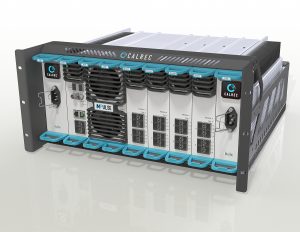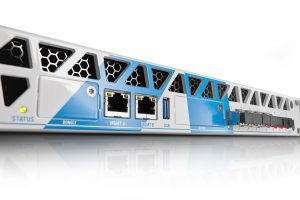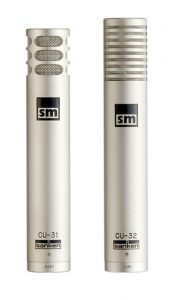AES NY 2018 Preview: Immersive Sound, Wireless Operations To Be Showcased
A brief look at what awaits on the exhibit floor
Story Highlights
This year’s edition of the Audio Engineering Society’s main annual technology expo (Oct. 17-20 at New York City’s Javits Center) will focus on the themes that have kept audio professionals busy all year: immersive sound, object-based mixing, and wireless-audio operations and management. Some of the cool stuff that will be on the show floor are detailed here.
Alteros (Demo Room 2D02), an Audio-Technica company, will introduce the Direct-to-Fiber extension to its GTX 6.5-GHz ultra-wideband digital wireless microphone system, providing enhanced range and flexibility. With the introduction of the GTX3224F control-unit version, 16 rear-panel Cat 5 transceiver ports are replaced with six fiber ports. Fiber connections, measured in miles instead of feet, can connect the control unit to as many as six GTX-FX8 eight-port fiber breakout nodes for remote Cat 5 connection to the network and power for up to 48 GTX32 transceivers (up to 16 GTX32’s can be connected directly to the GTX3224F via Cat 5 for a total capability of 64). The result is a system that can cover very large venues and multiple locations within a venue, as it did for ESPN’s deployment of the Alteros Direct-to-Fiber GTX system for coverage of the 2018 US Open tennis championships.
Avid (Booths 503, 504N) has announced the immediate availability of a new control surface, processing engine, and I/O rack option for its expanded VENUE | S6L unified live sound platform. The VENUE | S6L-24C control surface, VENUE | E6L-112 engine, and Stage 32 I/O rack are the first releases out of six components announced in April 2018. The VENUE | S6L platform features the same VENUE software and workflows across every model: engineers are offered an identical user experience regardless of system configuration, allowing them to focus on helping the artist to deliver the best performance possible.
Bose (Booth N717) will be showing its NFL-proven SoundComm B30 headset. Engineered with active noise cancellation, it represents a breakthrough for the live-event and sports intercom markets, where noise is pervasive. This headset offers significantly improved comfort, clear audio, and increased noise reduction compared with conventional passive headsets. Bose’s patented Acoustic Noise Cancelling technology provides increased attenuation of low-frequency noise. Single-earcup and dual-earcup headsets are available.
Calrec’s (Booth N263) Impulse core, the next-generation audio-processing platform for its Apollo and Artemis control surfaces, is making its U.S. debut. Impulse core features AES67 and SMPTE 2110 connectivity. With control connectivity via IP, surfaces can be physically remote and connected over standard networks using COTS hardware. This technology enables all Calrec customers to make the transition to next-generation audio (NGA) and IP infrastructures and provides the flexibility to do so without an overhaul of production equipment. Impulse provides 3D immersive path widths and panning for NGA applications; 5.1, 5.1.2, 5.1.4, 7.1, 7.1.2 and 7.1.4 input channels, buses, monitoring, and metering are available. It has an integral AoIP router, which fully supports NMOS discovery and connection management, as well as mDNS/Ravenna discovery. Two 5RU Impulse cores can be combined to provide full redundancy and can be physically remote from each other for disaster recovery.
In addition to Impulse core, Calrec will be showcasing its Type R expandable, IP-based radio system at the show. Type R’s physical control system consists of just three slim-line panels: a fader panel, a large soft panel, and a small soft panel. A simple 2RU core with integrated I/O resources can power up to three independent mixing environments, with no sharing of DSP resources. Calrec’s upgraded Brio consoles with expanded channel capability will also be on display. New expansion packs increase the Brio12 DSP count from 48 to 64 input channels and the Brio36 from 64 to 96 input channels.
Making its U.S. debut, Lawo’s (Booth 824) UHD Core is a network-based, software-defined audio DSP engine. Eight independent 10/1GbE network interfaces with SFPs enable the use of redundant networks via ST 2022-7 seamless protection switching (SPS). A UHD Core’s total network I/O capacity equals 40,000 48-kHz/24-bit audio channels. For management, the unit provides two redundant RJ45 1GbE management ports. In addition, full hardware redundancy is achieved by a second hot spare unit, which permanently mirrors all settings. System latency is comparable with conventional architectures connected via the backplane: a special high-performance RAVENNA profile provides network roundtrip latency in the sub-millisecond range while the processing power and speed of the UHD Core outperforms the processing latency of multiple DSP devices.
Pliant Technologies (Booth N846) will demo recently released v1.2 updates to its CrewCom wireless intercom system. The newest firmware incorporates improved ease of system configuration, improved RF range, and enhanced audio quality. Pliant has also introduced the system’s new Fiber Hub for a more efficient system deployment. The Fiber Hub (CHB-8F) expands system capabilities by allowing up to eight fiber connections using standard SFP-based single-mode fiber ports along with a single RJ45 copper port for interface to existing CrewNet connections. Pliant will also be showcasing its new SmartBoom LITE headset (PHS-SBL11), which has been updated with overall enhancements to audio quality.
Riedel Communications (Booth N545) will exhibit its 1.9-GHz Bolero six-channel, DECT-based wireless intercom system. Bolero is now available as a standalone wireless solution or can be fully Artist-integrated using a standards-based AES67 IP network. Decentralized antennas connect to AES67 switches and then to Riedel’s Artist digital matrix intercom frames equipped with AES67 client cards, which create an integrated point-to-point intercom ecosystem with roaming capabilities. Using multiple AES67 switch cascades, Bolero can accommodate large areas and long distances.
RTW (Booth 504G in the Avid Pavilion) will showcase its new 19-in. 4RU (MA4U) version of its TM9 TouchMonitor. The reconfigured unit brings all the audio-monitoring features of the standalone RTW TM9 in a new design that is more easily accessible to users in studio settings. The TM9 panel-mount version is 235 x 135 x 45 mm (9.25 x 5.35 x 1.8 in.) without the power supply and is suited for mounting into front panels. The unit comes standard with a USB extension for the front panel, and the mounting kit is compatible with DIN 41494/IEC 60297 19-in. 4RU racks (483 x 177 x 91 mm).
Sanken Microphones (Booth 331) will demo its new CU-31 and CU-32 compact condenser microphones. Although both mics share identical specs, the CU-31 features an on-axis pickup pattern, and the CU-32 has a perpendicular side-firing pattern. Featuring a smooth cardioid polar pattern and 6-dB–higher sensitivity than conventional microphones, the CU-31 and CU-32 are the newest models in the Chromatic series of professional mics, which includes the CO-100K supersonic wide-range omnidirectional condenser mic and the CU-51 dual-capsule cardioid mic.
The Telos Alliance TV Solutions Group (Booth N118) is showcasing its new Linear Acoustic ARC (Automatic Realtime Control) television loudness processor. ARC delivers a “set-and -forget” LUFS output loudness target, selectable profiles for easy compliance with EBU R128 and ATSC A/85 recommendations, two-channel (stereo or mono) processing for up to four independent programs, our next-generation APTO adaptive loudness processing, and more. Linear Acoustic ARC will have an MSRP of $3,995.00 and is expected to ship in January.
Wisycom USA (Booth 430) will show its MPR52-ENG dual-channel diversity receiver, which includes two built-in diversity receivers with both analog and digital outputs as well as 790-MHz switching bandwidth in the 470- to 1,260-MHz range and next-generation multiband frontend filtering. Software-selectable wideband and narrowband DSP-FM operation enables reliable use of multiple wireless channels within a tight RF space. This occupies a minimal RF spectrum and fits the constraints of any production environment. The company will also showcase its new LFA ultra-wideband active antenna, which operates in the 410- to 1,300-MHz frequency range and provides antenna gain of 7 dBi and adjustable RF amp gain of from -12 to +27 dBm for maximum dynamic range control. It also features three RF filters, including tunable, fixed, and high/low-band pass, which can be easily managed through four key navigation buttons and a TFT display.
